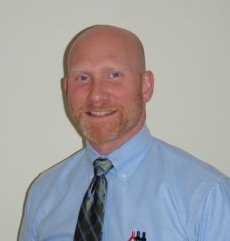In our weekly feature section, Pelvic Rehab Report is proud to present this interview with Herman & Wallace instructor Allison Ariail, PT, DPT, CLT-LANA, PRPC, BCB-PMD

How did you get started in pelvic rehab?
I got started in pelvic rehab by treating and specializing in SIJ and low back dysfunction. I used ultrasound imaging to retrain the local core muscles including the transverse abdominis, lumbar multifidus, and the pelvic floor muscles. In treating these patients, not only did they improve with respects to their back pain, but their incontinence improved as well! I then started getting referrals from doctors for incontinence patients. So I took PF1 and as they say, the rest is history! I know that pelvic rehab is my calling. I am impassioned about this subject and love treating these patients. I also thoroughly enjoy teaching about the pelvic floor and the pelvic ring. I truly feel I am one of the lucky ones to actually love what I do!
What do you find most rewarding about treating this patient population?
I am passionate about treating this patient population because it makes such a difference in their lives! I have had more patients than I like to admit say that if they did not find me and get on my schedule, they would have killed themselves due to their pain. This is so sad and alarming to me that individuals have gotten to the point of considering those thoughts. I feel blessed that I am in a position to not only improve their lives in the physical sense but also in the emotional one by lessoning their pain and improving their outlook on life! To me there is nothing more rewarding than seeing this dramatic of a change in a patient.
What do you find most rewarding about teaching?
One reason I love teaching is because it is a way to help improve the lives of more people suffering with pelvic disorders! There are not enough therapists that specialize in the pelvic floor and by teaching other therapists how to appropriately treat pelvic floor dysfunction, it positively impacts more people’s lives! I always find it magical when a course participant is hesitant and nervous to take the course. Then after the course they are excited and enthusiastic to treat this patient population and to learn more about this field. This is very rewarding to me and a reason I look forward to teaching each and every course.
If you could get a message to all therapists about pelvic rehab, what would it be?
One message I would try to get out to therapists about pelvic rehab is to get out and talk about it! Discuss what you do with physicians, the community, as well as people you meet in every day life. Often, when someone finds out what you do, you will get questions asked of you. However, don’t wait for this! There are so many women and men suffering in silence thinking that there is nothing they can do. So get out there and tell them what you do and how you can help can improve lives! Don’t be hesitant or shy, be energetic and excited to share your knowledge and educate the public about what we do as pelvic therapists!

In our weekly feature section, Pelvic Rehab Report is proud to present this interview with Herman & Wallace instructor Ginger Garner, PT, MPT, ATC.
How did you get started in pelvic rehab?
My entry point into pelvic rehab was a bit unorthodox and as a result, my colleagues at the time (back in the 90’s), considered my practice quite eccentric and frankly, a bit strange.
In fact, although I can see lots of humor in it now, I was actually pushed out of a practice because what I was doing was “too individualized” and patient specific. Of course, that “eccentric” entry point into pelvic rehab was integrative medicine, using a yoga-based biopsychosocial model of practice.
Who or what inspired you?
To answer that question I think you first have to be able to recognize and appreciate times when you have not been well supported or inspired, kind of like having to know adversity before you can recognize and value success.
Here’s my short story:
Early on in my education (in sports medicine, athletic training, physical therapy, yoga, and pilates) I realized that the biomedical model, although stellar at handling life-threatening emergencies, was not always so great at addressing chronic conditions and preventing disease processes and injury. So the answer to what inspires me – is the privilege of being able to be on the prevention end of injury and disease.
Back in the 90’s, I had a faculty instructor who encouraged me to keep pursuing my passion – in spite of the pushback I got from many directions, including within the department at the university. She found a way for me to pursue lateral work in the School of Public Health, which I felt was necessary in order for me to become a successful patient advocate. It was a great experience where I was able to work with the Governor’s Council on Physical Fitness and Health and conduct a pilot study. Her encouragement inspired me to keep following my dream, which is why I strongly believe in this quote by Mark Twain,
“Keep away from people who try to belittle your ambitions. Small people always do that, but the really great make you feel that you, too, can become great.”
Fast forward almost 20 years, and my most influential mentors, sources of my biggest inspiration, have been 1) Dr. Riane Eisler, holocaust survivor, attorney, social scientist, and founder of the not-for-profit organization, Caring Economics, which works to end violence against women and raise the status of caregiving; and 2) my three children. Experiencing pregnancy three times was an enormous gift, which allowed me the privilege giving birth not just to my three boys, but also to the framework for using yoga in prenatal, childbirth, and postpartum to prevent and manage injury and pain. The mothers I work with also inspire me. The work I do is for them and their future children.
What have you found most rewarding in treating this patient population?
There is go greater reward than empowering women, especially mothers and mother-to-be.
Women are too frequently disempowered by our current medical model. Their concerns are often marginalized and the care they get can be dehumanizing and humiliating, especially during maternal and childbirth care. I believe that above being a physical therapist, an athletic trainer, and an integrative clinician, I am first and foremost a patient advocate. Each woman I work with is a personal investment of my time, energy, and dedication. The reward of seeing a woman be able to pursue the compassionate birth she wants and deserves, to find relief from pelvic pain, and to know what questions to ask to get the best care from her health care providers, all because of the time I have spent with her – is worth more than gold.
What do you find more rewarding about teaching? (this could be one story or something you always find magical about the experience)
The two most rewarding aspects of teaching are 1) changing the course and paradigm of practice in rehab and medicine by fostering creativity and a shift toward person-centered, integrative practice, and 2) getting to be constantly immersed in research.
I love learning and am the perpetual student. I’m currently working toward my doctorate at UNC Chapel Hill, and love the interchange and partnership that is nurtured by being in education.
What trends/changes are you finding in the field of pelvic rehab?
The full circle return to seeing the person as whole, and not broken or as a part, is incredibly encouraging.
I am seeing this through the integrative courses that H&W is embracing, including my own courses in yoga, but also and perhaps more importantly, through the ground swell of individual health care consumer action. Folks realize “health care” doesn’t just consist of drugs and surgery, and they are seeking out integrated care now more than ever. Still yet, access to pelvic rehab can be vastly improved, which is a great segue into the next question.
If you could make a significant change to the field of pelvic rehab or the field of PT, what would it be?
As a patient advocate, I believe our biggest responsibility as clinicians is to improve access to pelvic rehab and integrated care.
Integrated care I define as “integrative medicine + rehab.” PT’s are not yet the practitioner of choice in many areas, including back and pelvic pain and orthopaedic injury. So we have our work cut out for us – to improve public health education and health literacy about physical therapy and specifically, pelvic PT.
If I had the chance, I would absolutely become involved in evolving the scope of practice and increasing the reach and influence of PT on a legislative and policy level.
What have you learned over the years that has been most valuable to you?
Relationship is more important than anything else.
You can be the most skilled clinician on the planet, and plan the best integrated, “wholistic” biopsychosocial plan of care the world has ever seen – and yet, if you haven’t connected with the patient and nurtured a therapeutic landscape that fosters compassionate care and a safe environment, then patient outcomes will falter. What’s more is, patient frustration and clinician burnout will be high.
When in doubt about what you are doing, return to nurturing relationship.
What is your favorite topic about which you teach?
My courses are like my children. I can’t choose a favorite. I love teaching integrated hip labral care, because it’s difficult and complex subject matter and urgently needed in this rapidly developing new field of hip rehab. But I equally love helping women toward the pregnancy and birth they desire and deserve.
Overall, no matter what the course is, yoga is the entry point for the zen I experience when teaching, practicing integrated physical therapy, and in my personal life. Ultimately, guiding my students and patients toward their own version of that mountain-top experience of personal and professional transformation – that is the real deal.
Ginger Garner, PT, MPT, ATCOther Credentials: PYT, ERYT500, CPI
GingerGarner.com
H&W Courses: HLI, YPREG, YPOST
The following insight comes from Herman & Wallace faculty member Peter Philip, PT, ScD, COMT, PRPC, who teaches Differential Diagnostics of Chronic Pelvic Pain: Interconnections of the Spine, Neurology and the Hips for Herman & Wallace, as well as the Sacroiliac Joint Evaluation and Treatment course. Peter has been working with pelvic dysfunction patients for 15 years, and he has some insights and advice for male practitioners who are nervous about treating female patients.
 As a male treating female patients suffering with pelvic pain, many considerations must be taken to ensure that the patient is comfortable partaking in the patient/clinician relationship. As clinicians treating the most intimate of pain, we all must be highly aware of the sensitivities that each of our patients has as it relates to their genitalia. Many patients wish to maintain their modesty while simultaneously wishing to eliminate that which is ailing them. It is common that the observation, and contact to the pelvis and genitalia be a component of our patient’s evaluation and subsequent treatment in order for an accurate diagnosis to be made. So, in order to best protect our patients and ourselves it will behoove us to take a few simple steps.
As a male treating female patients suffering with pelvic pain, many considerations must be taken to ensure that the patient is comfortable partaking in the patient/clinician relationship. As clinicians treating the most intimate of pain, we all must be highly aware of the sensitivities that each of our patients has as it relates to their genitalia. Many patients wish to maintain their modesty while simultaneously wishing to eliminate that which is ailing them. It is common that the observation, and contact to the pelvis and genitalia be a component of our patient’s evaluation and subsequent treatment in order for an accurate diagnosis to be made. So, in order to best protect our patients and ourselves it will behoove us to take a few simple steps.
- During the course of the oral history, listen to what the patient is saying. What structures may be involved at referring to the outlined region in question? Can these structures be addressed externally and without exposure of the pelvis?
- If a pelvic examination appears to be warranted, provide the patient with an understanding of what you will be evaluating and why. How does your evaluation reflect their pain? What are your expected findings?
- Provide the patient the opportunity to read-and-sign a waiver that explicitly states that the evaluation may include: exposing, visualization and contact to the pelvic region inclusive of internal contact.
- Provide a means of audio-recording the evaluation and subsequent treatments. Federal guidelines dictates that there be signs on the doors of any room or office space that is recorded, and having the patient sign permission to the audio-recording further protects themselves and the clinician.
- Always ask permission to expose, visualize, and touch when and if any of the above are to be involved in the treatment of the day. Do this every visit, every time, and prior to initiating a new maneuver or treatment strategy.
- Sit aside the plinth. Once observations are complete, there will be nothing to visualize. Drape accordingly and allow the patient to maintain modesty.
- Test-retest. During the course of your evaluation, there will likely be an asterisks or correlational finding. Apply your treatment, and re-test. Appropriate treatments should provide both patient and clinician immediate feedback as to the efficacy and specificity of the functional diagnosis that the clinician is making.
- Hold the patient accountable for their actions, and importantly their corrective actions whilst not in physical therapy. Our patients may see us for two hours a week, and if they are not complicit in maintaining that which we provide their healing will be compromised.
- As for the male/female component. Some women and men will not be comfortable with a male clinician. Many women wish to maintain their modesty and/or have been violated and will have anxieties towards contact by a male clinician. The aforementioned strategies help not only to maintain a patient’s modesty, but also provide the ultimate control of who touches them, when and where. More importantly it provides the patient the opportunity to say “no” and to cease contact at their discretion. For the male:male patient:clinician relationship there may be equally as many difficulties. Some have been violated, and many have a subconscious concern of how well they ‘size up’ in comparison. Not that a comparison would ever be made, but the underlying anxieties will often be omnipresent.
- Be honest and sincere with your patients and yourself. If you’ve made a clinical assessment that did not produce the immediate pain relief expected, state that to the patient, and continue your evaluation. If you don’t know the exact driver of the pain, or dysfunction, refer out to a local specialist and discuss your findings so as to better address your suffering patient’s needs.
In our weekly feature section, Pelvic Rehab Report is proud to present this interview with Herman & Wallace instructor Peter Philip, PT, ScD, COMT, PRPC

How did you get started in pelvic rehab?
While treating an MD, OB-GYN, he asked me a question regarding a patient that he was treating that was suffering from dyspareunia. I’d just completed my Master's in orthopedic physical therapy and realized that there was an entire section of the body that was "full of muscles, ligaments and nerves” of which I had virtually no knowledge. This bothered me, so I began my own independent research, study and application of skills learned through continuing education, and application of what are typically considered to be ‘orthopedic’ techniques to the pelvic pain/dysfunction population. To my (continued) wonderment, the patients responded exceptionally well, and efficiently.
Who or what inspired you?
Dr. Russell Woodman and Dr. Holly Herman have provided me with the foundational skills and motivation to help and heal those patients suffering.
What have you found most rewarding in treating this patient population?
Many patients have suffered for years prior to ‘finding’ me. Many are despondent, and have given up hope for a cure; resigning themselves to a life of pain. Providing the means of restoring comfort and wellness is gratifying, rewarding and quite frankly, humbling. What an honor it is to help those that suffer regain the life that they thought they’ve lost.
What do you find more rewarding about teaching?
Having the opportunity to assist clinicians (MDs, PTs, DCs) more effectively, efficiently evaluate and treat their patients provides me with the same gratification that treating the patients myself. This, in addition to being able to help those that have not been helped attain their wellness and health they’ve been seeking, often for years.
What was it like the first time you taught a course to a group of therapists?
The first course I taught was in NYC. The air conditioning was broken, and the office had a few, small windows. The ambient temperature was upper nineties, and no breeze. Through the tortuous temperatures, and ‘first time jitters’ I persevered, and the staff were incredible hosts and provided me with guidance that I appreciate to this day!
What trends/changes are you finding in the field of pelvic rehab?
Manual medicine and non-surgical interventions are being more recognized as very viable means to address, and eliminate pain while improving biomechanics and function. Medical practitioners from all fields are consulting with specialists in the field of pelvic pain to better address their patients' suffering. We are at the forefront of interventional treatments, and patients are seeking effective means to eradicate their pain and dysfunction.
If you could get a message to all therapists about pelvic rehab, what would it be?
Review, re-read, re-learn all the anatomy, neuroanatomy, kinematics and never forget to think, think, think.
In our weekly feature section, Pelvic Rehab Report is proud to present this interview with Herman & Wallace instructor Michelle Lyons, PT, MISCP

How did you get started in pelvic rehab?
Like a lot of therapists whom I talk to when I travel and teach, it was after the birth of my daughter, when I realized what an under-served population postpartum women are! After childbirth, the focus almost entirely shifts to the baby, and poor old Mum is left, by and large, to fend for herself. Now, more than ever, when we are looking at shorter hospital stays and the lack of maternity leave, we as pelvic therapists need to grow awareness of the needs of women throughout the life cycle and what we have to offer. Pelvic rehab is a high touch, low risk, cost effective and highly effective (yet under used) treatment option. I am passionate about spreading the Pelvic Rehab Gospel!
Who or what inspired you?
Holly Herman. The woman is a pelvic legend. If you get the chance to take one of her course, do it. An amazing breadth, width and depth of expertise and experience.
What do you find more rewarding about teaching?
Confession: I am a pelvic nerd. I just love talking about the fascinating interplay of anatomy, physiology, psychology, form and function. I am (almost) never happier than when I get to spend a weekend with a group of therapists exploring diagnoses, assessments, interventions and outcomes with a like minded group of pelvic health professionals. Whenever I teach, I always learn something too – I really like the classes I teach to be conversational and we tend to have some interesting sidebars and tangents! But I think that just adds to the learning experience – we have all had different pathways educationally, personally and professionally, and I think that looking at different perspectives and approaches can only be a good thing, especially for the patients we treat.
How did you get started teaching pelvic rehab?
My background was in sports medicine and MSK dysfunction. I come into the wonderful world of pelvic health about 15 years ago. Now I look on that background as being incredibly important – I think in order to be a great pelvic therapist, you really need a solid orthopedic expertise. You can’t treat the pelvic floor without looking at the pelvic girdle (and spine and hips and feet and …..!)
What trends/changes are you finding in the field of pelvic rehab?
I think we are learning more and more about Pain Science – sometimes on a daily basis. I think one of our primary role as pelvic therapists can be as educator – I often say to classes that most people know more about their phones than they do about their own bodies! So having anatomical models, books and learning aids can be a great way to empower our patients. I always emphasize including biopsychosocial approaches in working with patients, talking about issues like central sensitisation, the effects of chronic pain and worry on the brain etc BUT I do think we have to be careful, too, that we don’t ignore the biomedical. Sometimes I worry that the pendulum is swinging too far – we have to be sure that we are addressing the physical problems as well!
The other big trend I see is engagement on social media! Just over a year ago, after I taught a course in the UK, I set up a Facebook group with my friend & colleague, Gerard Greene, called Women’s Health Physiotherapy. We now have over 2300 members from all over the world and it is so heartening to see international colleagues from the US, the UK, Australia, the Middle East and Ireland talking, sharing ideas, questions, resources and clinical reasoning. So reassuring to know that others have dealt with the same problems we may be facing in our daily patient caseloads! The Facebook group has been a great success and in fact we submitted a poster based on the group looking at how SoMe can benefit physiotherapists internationally and it has been accepted for presentation at WCPT in Singapore in May.
If you could get a message to all therapists about pelvic rehab, what would it be?
You have such an amazing skillset – you have the power to effect HUGE change in your patients’ lives. The CSP (the governing body for Physiotherapists in the UK) acknowledges that pelvic health is one of the few growth areas within our profession. I think as pelvic therapists, we have the ability to integrate gynaecological, obstetric, orthopaedic, hormonal, oncological and biopsychosocial systems. We are skilled interviewers, skilled manual therapists and skilled exercise/lifestyle precribers. We have the ability to take our patients from being passive recipients to active participants in their own healthcare. It is the best job in the world!
If you could make a significant change to the field of pelvic rehab or the field of PT, what would it be?
I would love to see our role more widely understood and acknowledged. Most of our medical colleagues don’t know what we do! The other big change I would love to see in the U.S. is national registration – I hear from so many therapists how restrictive individual state licensure is and how it can hold them back from job opportunities. I do understand that this is an issue that is hopefully on the horizon, and I think that will be a huge boost to our profession!
What have you learned over the years that has been most valuable to you? Never stop learning! There are always more books to buy, articles to read and courses to attend, but it is just as important to take time to assimilate new knowledge and always ask yourself – ‘Does this change how I would practise? How? Why?' Got to love that clinical reasoning skill set!!
What is your favorite topic about which you teach?
So….this is a tricky one! I teach the Pelvic Floor series and the Pregnancy series. I have developed a number of specialty topics for Herman & Wallace over the years – The Athlete & the Pelvic Floor, Menopause – a rehab approach, Special Topics – Endometriosis, Infertility & Hysterectomy and Oncology & the Male Pelvic Floor and Oncology & the Female Pelvic Floor. To pick just one is impossible! I truly love teaching them all, but if I had to narrow it down I would have to have joint winners. PF1 because I really see this course as the ‘gateway drug’ to a career in pelvic health – I just love to watch as participants move from that first scary lab session (!) to the end of Day 3 and feeling of ‘Yes! I get this! I love pelvic rehab!’. The other joint winner would have to be Oncology & the Female Pelvic Floor – we have so much to offer the survivors of gynaecological cancers. However, unlike our well publicized and relatively well researched role in prostate cancer rehab, gynae cancer survivors are often left to deal with problems encompassing orthopedic, soft tissue, lymphatic, sexual and continence function issues. We have work to do in raising our profile in cancer survivor-ship programs for these women. So, talking about the effects of cancer and cancer treatment on life with and after cancer is an issue I feel very strongly about.
In our weekly feature section, Pelvic Rehab Report is proud to present this interview with Herman & Wallace instructor Jennafer Vande Vegte, MSPT, BCB-PMD, PRPC

How did you get started in pelvic rehab?
A supervisor of mine suggested that I go to a course and develop a pelvic floor program. I thought she was nuts. As a late twenty-something, I wanted to work with athletes. Finally she convinced me to go. Imagine my surprise when I felt like a duck in the water in the Pelvic Floor Level 1 class.
Who or what inspired you?
Truly I was smitten by Holly Herman at PF1. Her unique teaching style combining her incredible knowledge and fascinating stories with compassion and clarity is something to behold. Later I met Kathe at PF2A and was so inspired by both of these amazing women.
What have you found most rewarding in treating this patient population?
It is such an honor and a privilege to do what we do. At times we share a facet of our patients lives that even their spouses or best friends don't know about. It is not rare for someone to tell me, "I've never told anyone that before." Being trusted to share in these private experiences with others is a blessing to me.
What do you find more rewarding about teaching?
That's easy! I love the "ah-ha" moment when the light comes on in someone's eyes. When they "get it", whether it's finding the ATLA for the first time or understand another treatment direction for a complex patient, this is the moment that I love. I also treasure being around other people who love to do what I love to do!
How did you get started teaching pelvic rehab?
My hospital hosted the PF series years ago and I got to TA. I invited Holly and Kathe out to dinner and basically begged them to think of me if they ever had a teaching position open. Luckily the company was growing and I was shocked to have an opportunity to teach PF2B within a year. I was thinking maybe in 5 years, but I jumped at the chance.
What was it like the first time you taught a course to a group of therapists?
I was SO nervous. I studied like crazy for 6 months! I thought I did a horrible job until I read the reviews at the end of the course and realized I did okay.
What trends/changes are you finding in the field of pelvic rehab?
The amount of knowledge and research in our field is exploding. There are amazing blogs and recourses online for both patients and therapists to get information. Patients are coming in much more educated. Doctors seem to be getting the message that pelvic floor PT is a good first line option for their patients.
If you could get a message to all therapists about pelvic rehab, what would it be?
Every therapist should know a pelvic floor therapist and know when a consult would be appropriate. All therapists should try to feel more comfortable asking appropriate patients about elimination and sex.
If you could make a significant change to the field of pelvic rehab or the field of PT, what would it be?
I would love to see more of a team approach between physicians, PTs, therapists, pain clinics, nutritionalist, etc. especially in treating complex pelvic pain.
What have you learned over the years that has been most valuable to you?
Oh so much. Listen to your patient and hear what he or she or he is telling you. Don't feel like you have to have everything figured out on the initial evaluation. Treat what you find and continue to evaluate and listen.
What is your favorite topic about which you teach?
I think it changes each time, but right now I am really interested in relaxation techniques and down training especially as we understand more about the brain's involvement in pain responses.

Do you have a burning question about pelvic rehabilitation? Herman & Wallace faculty member Michelle Lyons will be happy to help! The Pelvic Rehab Report will be conducting an interview with Michelle and we are inviting you to submit your questions. Head over to www.hermanwallace.com/michelle-lyons-question-and-answer if you are curious to hear about what it's like treating pelvic pain patients, some of Michelle's experiences practicing abroad, teaching courses to practitioners, or about her favorite pasta sauce! We will take the top 5 or 10 questions and put Michelle through the ringer.
Michelle Lyons PT, MISCP, is a graduate of University College Dublin, Ireland, with over eighteen years experience working in women's health. A firm believer in integrative healthcare, she incorporates therapeutic pilates, yoga and lifestyle advice into her treatment protocols.
Michelle has appeared in local newspapers, radio and television programs speaking on women's health issues. She has presented programs in Ireland, Canada and the U.S. including The Wise Woman weekend, The International Herbal Symposium and The New England Women's Herbal Conference and for the Irish Society of Chartered Physiotherapists.
Michelle has written several courses which she instructs with Herman & Wallace. The list includes Menopause Rehabilitation and Symptom Management, Special Topics in Women's Health: Endometriosis, Infertilty and Hysterectomy, Oncology and the Female Pelvic Floor: Female Reproductive and Gynecologic Cancers, and Oncology and the Male Pelvic Floor: Male Reproductive, Bladder, and Colorectal Cancers.
The Pelvic Rehab Report had an opportunity to interview Dawn Sandalcidi, the creator and instructor of "Pediatric Incontinence and Pelvic Floor Dysfunction". Dawn has developed a pediatric dysfunctional voiding treatment program in which she lectures on nationally. Dawn has published articles in the Journal of Urologic Nursing, the Journal of Manual and Manipulative Therapy, and the Journal of Women’s Health Physical Therapy. Let's hear more from Dawn about her Pediatric Incontinence and Pelvic Floor Dysfunction course!

What essential skill does your course add to a practitioner’s toolkit?
Adding pediatrics to your practice truly allows you to treat the pelvic floor through the lifespan. If you are a pediatric therapist adding this most important specialty will complete the picture of your entire patient.
Will your course allow practitioners to see new/more patients?
There are so many therapists who tell me that while treating a parent they share a story about their child being a bed wetter or having incontinence. That has opened up many doors for including this population into my practice. Be careful though! Once the pediatricians, school nurses, pediatric urologists and GI docs know there is someone out there that can take care of kids you will be flooded with patients!!
Why did you develop this course?
I began treating pediatrics after having success with adult patients in a large urology practice over 25 years ago. One of the urologists called me and asked me to take care of this little girl who had already been operated on twice and was headed toward kidney transplants. My reply was "what is wrong with kids?????" So my journey began- observing surgery and learning how children developed pelvic floor dysfunction. This kiddo had vesicoureteral reflux or a back flow of urine form the bladder to the kidneys causing frequent infections and kidney damage. My goal in this course is to take the basic knowledge we have as therapists and apply it to a population of children who suffer terribly with urinary and fecal incontinence. The psychological side effects from incontinence are significant and we now have the tools to help!!











































